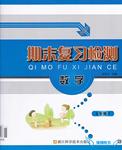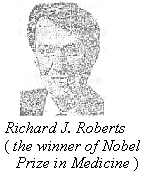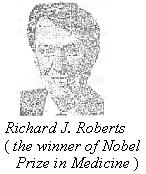

 品学双优卷系列答案
品学双优卷系列答案 小学期末冲刺100分系列答案
小学期末冲刺100分系列答案 期末复习检测系列答案
期末复习检测系列答案 超能学典单元期中期末专题冲刺100分系列答案
超能学典单元期中期末专题冲刺100分系列答案科目:初中物理 来源: 题型:阅读理解
查看答案和解析>>
科目:初中物理 来源: 题型:阅读理解

查看答案和解析>>
科目:初中物理 来源: 题型:阅读理解

查看答案和解析>>
科目:初中物理 来源: 题型:阅读理解
摘要:本文分析了如何挖掘物理题中隐含条件的途径和方法。并对物理学试题题型进行归类、例举和解析。学生要解好物理题,必须要有扎实的物理知识和相关学科的知识,综合分析和解决问题的能力。因此,在物理教学过程中要注重提高学生的解题能力,加强对解题方法的教学。 关键词:隐含条件 物理学 解题能力 学习在解物理习题时,经常会遇到这种情况,有些解题的必要条件,题中并为明确给出,而是隐含在字里行间。充分挖掘隐含条件,明确题目要求,采用合适方法,选择正确答案,是解好这类题的关键。本文就如何挖掘试题中的隐含条件,提高解题能力作一例析。 一、从关键词中挖掘隐含条件 在物理题中,常见的关键用语有:表现为极值条件的用语,如“最大”、“最小”、“至少”、“刚好”等,它们均隐含着某些物理量可取特殊值;表现为理想化模型的用语,如“理想滑轮”、“轻质杠杆”、“光滑水平面”等,扣住关键用语,挖掘隐含条件,能使解题灵感顿生。 例1 一个物体在平衡力的作用下,在光滑水平面上做匀速直线运动,当这对平衡力突然消失,则物体将( ) A.立刻停止运动 B.运动速度越来越快 C.速度减慢,最后停止 D.仍作匀速直线运动 解析:题中“光滑水平面”为关键词。光滑水平面意味着物体不受摩擦力的作用。题目中的物体待平衡力消失后,将不再受力的作用,因此仍要保持匀速直线运动(牛顿第一定律)。 答案:D 二、从物理学常识中找隐含条件 有些题目几乎没有条件,但仔细研究就会发现条件其实全部隐含于物理常识中,这就要求学生根据题意进行发散性思维,努力挖掘相关知识,在条件不足的情况下,根据常识假设适当的条件和数据以弥补题中明确给出的已知条件的不足。 例2 一个中学生对地面的压强大约是( ) A.10Pa B.100Pa C.1000Pa D.10000Pa 解析:此题隐含条件有两个,一是中学生的体重约为50kg,二是中学生双脚底面积约为5dm2,而这两个条件都非常隐蔽,属于物理学常识,只要明确了这两点,不难得出正确答案D。 三、从物理学发展史中寻找隐含条件 这类试题一般涉及对物理学研究有贡献的科学家、科研成果和历史进程等,增加了学生的爱国情感,有利于培养学生的高尚情操,激起学生学习生物学知识的远大理想。 例3 发电机和电动机的发明使人类步入电气化时代,制造发电机的主要依据是电磁感应现象,首先发现电磁感应现象的是( ) A.爱因斯坦 B.帕斯卡 C.奥斯特 D.法拉第 解析:知道这些科学家的研究成果和对社会的巨大贡献,很快就能准确地选出正确答案D。 四、从物理现象的出现条件中寻找隐含条件 一定的物理现象的出现,是以具备一定的条件为前提的,当知道什么条件具备时可出现什么现象后,一旦题目给出某种现象,马上可以找出相应的隐含条件。 例4 我国“远望号”卫星测控船从江阴出发执行任务,由长江进入海洋。下列有关测控船所受浮力的说法正确的是( ) A.由于海水的密度大,所以船在海洋力受到的浮力大 B.由于船排开海水的体积小,所以它在海洋里受到的浮力小 C.由于船排开的海水的体积大,所以它在海洋力受到的浮力大 D.由于船始终漂浮在水面上,所以它受到的浮力不变 解析:“一个物体漂浮在液面上……”,出现这种现象的条件是物体所受浮力等于物重,所以隐含条件是物体受到的浮力等于重力。 答案:D 例5 放在水平常木板上重10N的木块,受到水平向右,大小为5N的拉力作用,沿水平方向做匀速直线运动,这时木板水平方向受的合力为_______N。当拉力增大到8N时,木块受到的合力为_______N。 解析:“一个物体匀速运动……”要出现这种现象,前提条件是物体必须不受力或受平衡力作用,所以隐含条件为:物体不受力或受平衡力作用。 答案:0;3 五、从物理概念、物理原理中寻找隐含条件 有些物理学问题、现象、判断等条件隐含于相关的概念和原理中,或是命题时有意混淆概念,偷换概念,要求学生对概念掌握准确,理解要透彻。 例6 晴天,几位大学生在森林中迷路了,下面四种利用风向引导他们走出森林的说法中,正确的是_______(图中虚线为空气流动形成风的路径示意图)
A.森林吸热,温度升高慢,空气温度低、密度大,地面空气从森林流向外界,应顺风走 B.土地吸热,温度升高快,空气温度高、密度小,地面空气从外界流向森林,应顺风走 C.森林吸热,温度升高慢,空气温度低、密度大,地面空气从森林流向外界,应迎风走 D.土地吸热,温度升高快,空气温度高、密度小,地面空气从外界流向森林,应迎风走 解析:本题中隐含了比热容的概念。物体的比热容越大,吸收热量后温度变化越小。 土地的比热容大,吸热后温度升高较快,空气温度高。热空气因密度小而向上升,地面空气从森林流向外界,应顺风走。 答案:A 六、数学关系之中寻找隐含条件 正确的示意图不仅能帮助我们理解题意、启发思路,而且还能通过数学关系找出题中的隐含条件。这种方法不仅在几何光学中有较多的应用,而且在其它物理问题中也经常应用。 例7 有一均匀正方体对水平地面的压力是F,压强是P,如下图所示。若切去阴影部分,则剩余部分对地面的压力是原来的_______倍,压强是原来的_______倍。
解析:该题的条件隐含在数学关系之中,解题的关键要建立物理模型的空间想象力。切去部分的正方体边长为a/2,体积为V/8。切去阴影部分后,其质量为7/8m,底部受力面积为3/4S,剩余部分压强为P’=m/S=7/6P,压力为F’=Ps=7/8F。 答案:7/8;7/6 七、从图形、图表与曲线关系中寻找隐含条件 图示是贮存和传递科学文化知识比较便捷的一条途径,它能够高度浓缩物理学的基本概念及原理,使之更加形象、直观。试题图文并茂,生动活泼,但图表曲线中隐含了相当多的没有叙述和未提及的条件,解题时结合题设条件分析图形,从图形中挖掘隐含条件,才能正确作答,较好地培养学生的观察和分析问题的能力。 例8 在如图所示的各图中,关于磁场的描述和小磁针表示正确的是( )
解析:这是一道集概念、实验和理论于一体的图形选择题,要求学生明确磁场的概念、磁场方向及磁场方向的规定等情况,这样才可选出正确答案为B。 八、从实验的器材、操作过程或结果中寻找隐含条件 在理论试题中,也有相当多的题干条件看似不足,其实隐含在实验器材、操作步骤和实验结果之中,要求学生根据已有知识,挖掘这些隐含条件,从而得出正确答案,这有利于考查学生的实验操作技能,有利于培养学生的创新精神和实践能力。 例9 如图所示电路,图中1、2、3表示电流表或电压表,请填上各表电路符号.并标出正、负接线柱的位置。
解析:判断电表的类型,需了解器材的使用规则。电流表要串联接入电路,电压表要并联接入电路。判断时,可假设将改表处断开,凡对电路结构有影响的是电流表,没有影响的是电压表。答案如上图。 九、选择合适的方法 确定解题思路,根据题型特点,充分理解题意。采用合适方法,能很好地提高解题能力,常用的物理方法有控制变量法、等效法、转换法、数据归纳法等。 例10 下表列出由实验测定的几种物质的比热容。认真阅读,你一定会有所发现,请填出任意三条:
(1)________________________________________; (2)________________________________________; (3)________________________________________。 解析:给表找规律时一般采用比较分析,综合分析的方法,即可找一般规律如某种变大或变小的趋势,共性等,也可找特殊规律。此表中12种物质除煤油和冰比热相同外,其他不同。说明不同物质得比热一般不同,这是共性。但冰和煤油不同物质比热相同这是特殊性质。水、冰同种物质,状态不同,比热容也不同。且可将物质分为金属、非金属进行比较。还可找比热容最大的、最小的。 例11 用实验研究决定电阻大小的因素,供选择的导体规格如下表:
①要比较电阻与长度的关系应选择导线:_______________________; ②要比较电阻与横截面积的关系应选择导线:_______________________; ③要比较电阻与材料的关系应选择导线:_______________________。 解析:本题中导体的电阻与导体的长度、材料、横截面积三个物理量有关,要探究它们之间的关系,要采用“控制变量法”。要验证猜想一,就要取不同的长度,相同材料和横截面积的导线,所以应选序号1、2,同理可选出另两个猜想的序号。 答案:(1)1、2;(2)3、4;(3)1、3 |
查看答案和解析>>
湖北省互联网违法和不良信息举报平台 | 网上有害信息举报专区 | 电信诈骗举报专区 | 涉历史虚无主义有害信息举报专区 | 涉企侵权举报专区
违法和不良信息举报电话:027-86699610 举报邮箱:58377363@163.com